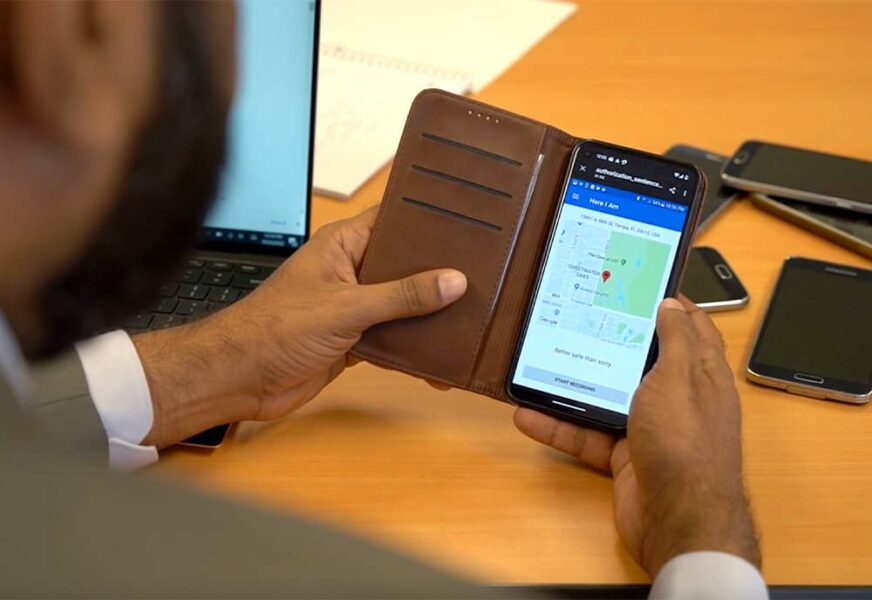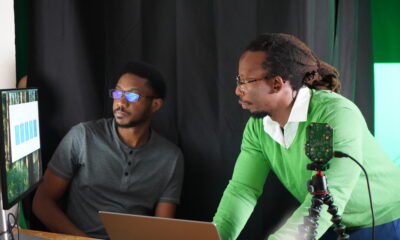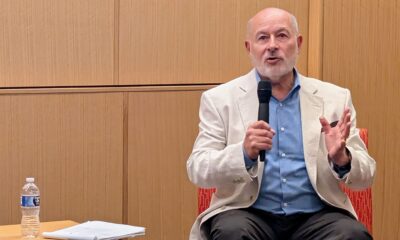Know
USF professor patents ‘digital alibi’ technology

In between teaching computer science and engineering, Professor Sriram Chellappan spent the last several years brainstorming ideas that could help protect people wrongly accused of crimes.
His recently patented technology does that and more.
Researchers at the University of South Florida are now licensing a new technology that creates an unforgeable, encrypted digital certificate on a user’s cellphone. The platform, called Here I Am, provides a more accurate confirmation of a person’s identity and location by using their voice, collecting ambient sounds and utilizing the device’s camera.
“This is a service that can let anyone prove that they were at or not at a particular point in time,” said Chellappan. “Years after the fact.”
While there are many potential use cases, Chellappan told the Catalyst that his initial focus was bolstering social justice. He noted that people are often detained for crimes they didn’t commit, resulting in a loss of pay or their job.
While authorities can track a device’s location, proving the operator’s identity is more difficult. That becomes exponentially more challenging, said Chellappan, after several years.
“If somehow they have a way by which they can prove to the police officer that, ‘look, I was not there at this point,'” he said. “Then at least that gives them a temporary alibi that the police can verify quickly.”
He elaborated that Here I Am’s self-authentication begins with a randomly generated text message. The user repeats the phrase, and the technology record’s the person’s voice, date, time and the phone’s metadata.
Chellappan added that the platform could also record other identifying information, such as the temperature and ambient sounds. The device sends that data to a central server, potentially to a service provider like Verizon or Google.
The server, Chellappan explained, then creates a cryptographic record – a hash – that is stored and immediately sent back to the device.
“It’s saying that both of these have been signed by a trusted third party,” he said. “And these two are unforgeable – there’s a lot of cryptography involved here. The technology is also private because I and I alone initiate the request to authenticate.”
After discussing his idea with Balaji Padmanabhan, professor of information systems and management at USF, the two realized other use cases for unforgeable and provable identity certification.

USF Professors Sriram Chellappan (left) and Balaji Padmanabhan.
In addition to self-authentication, there is a use category called parent-child, where an organization or “parent” sends a notification to an employee or customer – the “child.” Chellappan said this mode is especially useful with ride-share services like Uber, allowing companies to validate and protect users and drivers.
“There are many applications for parent-child, for example, test taking,” said the professor. “Because there is rampant cheating in test taking today.”
The final category is ambient authentication. Chellappan realizes this mode could encounter privacy concerns and restrictions but explained how it could aid domestic violence victims.
He said someone could utilize Here I Am to provide police with their exact location during an assault. The technology could also record voice, video “and other biometrics” to later use as evidence against the perpetrator.
Chellappan said the service could refute claims that someone was not present for a crime, just as it allows users to establish a digital alibi. “But this has some privacy challenges because I am actually trying to authenticate somebody else using my phone,” he added.
The USF team – which includes computer science and engineering students that helped build the Here I Am prototype’s cryptography – is now working on licensing the technology with communication providers. Chellappan relayed that telecom companies have discussed providing a uniform location-based service, and he believes Here I Am could be a part of that initiative.
However, he noted that there are challenges to widespread adoption. He said some companies might not want to be associated with an app that tracks locations, and relevant laws could apply differently to Google or Verizon, for example.
“We are understanding slowly as we are navigating this landscape,” said Chellappan. “I think we will probably be in better shape in two, three or four months from now. Understanding the technological landscape, the feasibility, the privacy and the human-central aspects of it.”








John Donovan
November 29, 2022at5:32 pm
Interesting technology. The data might be best retained by the person self providing the data with opportunity to establish primary and secondary beneficial ownership rights.